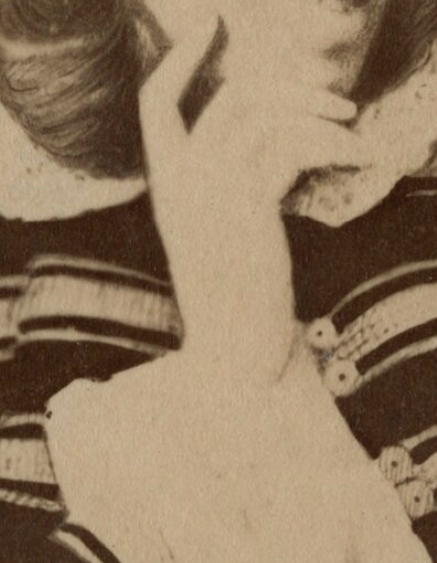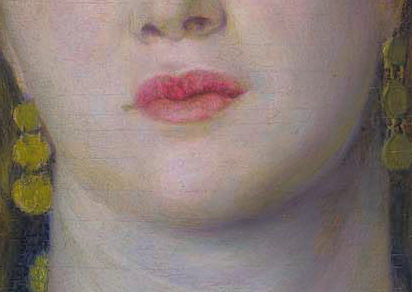Kathryn Hughes has written a veritable freak show of a book. In Victorians Undone: Tales of the Flesh in the Age of Decorum, she fluidly and graphically describes iconic Victorian figures by focusing not on their accomplishments but on various body parts that had some effect on their lives.
A professor at the University of East Anglia, Hughes explains that the genre of “biography”—etymologically “life writing”—tends to conceal or deny the importance of the embodied aspects of life. Victorian biographers in particular, she contends, wrote “as if their subjects . . . had never possessed such a thing” as a body. Lytton Strachey’s Eminent Victorians (1918) was in part a reaction against this tendency; he gleefully exposed not only the moral and psychological but also the physical imperfections of his subjects. He wrote, for example, of the saintly Florence Nightingale’s “peevish” mouth and fat, cushiony old age. Hughes seeks to restore that kind of “lumpiness” to biography; she thinks readers will want to know of the subjects of biographies
Victorians Undone is an experiment aimed at putting “mouths, bellies and beards back into the nineteenth century.”
Hughes begins with the plight of one of Queen Victoria’s ladies-in-waiting. Court politics were vicious early in Victoria’s reign, and Lady Flora Hastings became the target of surpassing nastiness. In 1839 she grew deathly ill; Hughes writes that she was “thin as a skeleton,” her “once-elegant neck, now stretched like twisted rope,” her scalp “a rucked patchwork of bristle and skin.” Most noticeable, though, was her belly, which thrust “obscenely from her sparrow frame.” Was unmarried Lady Flora pregnant? The teenaged Victoria delighted in “sizing up women’s bodies for evidence of their sexual lives” and furthered the rumor that Lady Flora was in a scandalous condition. She was subjected to grossly ignorant gynecological examinations—and ultimately died not because she was pregnant but because of a painful liver disease. The incident, Hughes writes, “stripped bare the realpolitik of women’s sexual lives at court,” where no one—not even Victoria—was spared: “Her reign would not be secure until her body had done what queens’ bodies are supposed to, which is produce a male heir.”
Hughes turns next to Charles Darwin. The scientist suffered from painful facial eczema and so he happily embraced the post-Crimean War mania for facial hair. Darwin’s long, bushy beard became iconic thanks to photographers like Julia Margaret Cameron and cartoonists who drew his extravagantly furry face atop simian bodies in mockery of his theory of evolution. Men assumed that bristling whiskers conveyed manliness, Hughes argues, while women were disgusted by beards’ uncleanliness. By the 1870s, a younger generation of men scuttled the beard fad.

Hughes, who previously wrote a biography of George Eliot, here dedicates a chapter to the great novelist. Eliot was sensitive about her homely appearance—of which Henry James famously said, “in this vast ugliness resides a most powerful beauty which, in a very few minutes, steals forth and charms the mind so you end, as I ended, in falling in love with her.” Hughes puts to rest the rumor that years of churning butter had made Eliot’s right hand larger than her left; Hughes examines one of Eliot’s right-hand gloves and finds it a size 6½—“the nearest thing to a nymph’s.”

Hughes uses the scandal surrounding Dante Gabriel Rossetti’s painting of his lover Fanny Cornforth—emphasizing her voluptuous, kissable lips—to explain how working-class women in the 1840s and ’50s resorted to “sly prostitution” to earn extra money. Hughes believes that Cornforth “behaved exactly as any of us might if we had grown up without any expectation that the world would feed us for free.” A different Fanny—an 8-year-old murder victim named Fanny Adams—is the focus of Hughes’s last chapter. She describes in grisly detail how the girl’s dismembered body was discovered, piece by piece.
Hughes’s expertise in the Victorian era makes her the perfect pathfinder for a new style of “life writing,” and her warts-and-all approach to forensic biography adds another dimension to our understanding of the past. The mix of flesh and decorum, propriety and prurience is highly readable. But her graphic bodily revelations—lurid and sometimes macabre and bloody—will not be everyone’s cup of tea. In the hands of a lesser scholar, this subject could become outright pornographic; as it is, Victorians Undone feels sensationalistic and somewhat voyeuristic—meaning that it is certainly in keeping with our own times.

